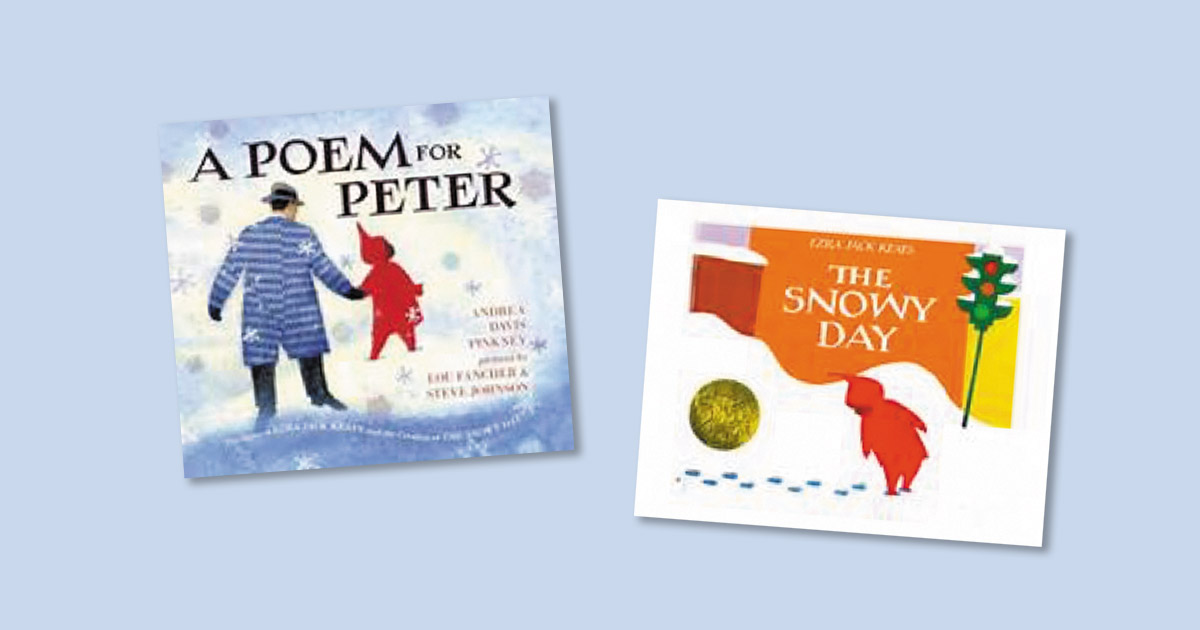Each month, I spotlight two books guaranteed to delight readers and provide fun activities to further extend the meaning of each reading experience. With so many wonderful titles available, this is no easy task! I bring a 33-year teaching career, literacy expertise, and a passion for creating joyful readers to every column I write. I certainly hope you enjoy this month’s picks as much as I do.
SNOW, SNOW, SNOW!
What child does not rejoice when the first snowflakes fall and the words “Snow day—school is canceled!” scroll across the bottom of the television screen? With remarkable quickness, children don layers of warm clothing, followed by boots, hats, and gloves, then busily pull sleds and toboggans out of storage for a day of fun in the snow. But how is snow made, and why is some snow perfect for building a snowman, yet other snow is best suited for a batch of delicious snow cream?
How does snow form?
- The temperature in the clouds must be very cold.
- Water vapors freeze in the air before they can turn into water, forming tiny ice crystals.
- When the ice crystals collide, they stick together and a tiny snowflake is formed.
- If sufficient numbers of ice crystals stick together, they will be heavy enough to fall to the ground.
- Each snowflake is unique in pattern and shape, but each has six sides and can even contain as many as 200 ice crystals.
Snow Q & A
Q: Can it be too cold for snow?
A: As long as there is some moisture in the air, it can snow in extremely low temperatures.
Q: Is snow really white?
A: Snow is actually translucent, because it is made of colorless ice particles. The snowflake takes on whatever color light is reflected, and, typically, white light bounces back as the color white—but snow can also appear blue (very deep snow) or pink (in high altitudes).
Q: Can snow be dangerous?
A: While snow is so much fun to play in, it can be dangerous, too. Roads can become slick during a snowstorm and staying outside too long can cause frostbite.
Q: What type of snow is best for building a snowman? Sledding? Making snow cream?
A: Heavier, wet snow (though not slushy), present when temperatures are just above or just below freezing, is best for packing and stacking the snowballs to fashion a snowman. While any snow works for sledding, the more snow, the better! Powdery, dry snow best absorbs the flavors added into the snow cream and other wintery treats.
Snowball
I made myself a snowball
As perfect as could be.
I thought I’d keep it as a pet
And let it sleep with me.
I made it some pajamas
And a pillow for its head.
Then, last night it ran away,
But first—it wet the bed.By Shel Silverstein (Falling Up, 1996)
A POEM FOR PETER: THE STORY OF EZRA JACK KEATS AND THE CREATION OF THE SNOWY DAY
Andrea Davis Pinkney’s lyrical narrative celebrates the life of Ezra Jack Keats—the story of a boy who pursued a dream, and who, in turn, inspired generations of other dreamers to do the same. Ezra Jack Keats, son of struggling Polish immigrants, did not let a lack of opportunity stand in the way of developing his artistic skills through the years, and in time, his obvious talent was recognized. He began winning prizes and scholarships that eventually led to the fulfillment of his greatest dream—writing and illustrating his own book, featuring Peter, the well-known young boy in the red snowsuit that many consider to be one of the most important American books of the 20th century.
THE SNOWY DAY
This 1963 Caldecott Medal winner by Ezra Jack Keats captures the wonder and beauty of a little boy, Peter, exploring the city on a snowy day—e.g., knocking snow from a tree, creating snow angels, and experimenting with footprints. This was a classic text with universal appeal that blazed the trail for children of color to be central characters in picture books. The timeless, simple story of the sheer pleasure that surrounds awakening to a freshly snow-covered landscape, coupled with vivid illustrations using collage, watercolors, and cut-outs, has been a favorite of children for over five generations and, as a result, has earned its rightful place as “a text not to be missed” in the world of children’s literature.
EXTENSION ACTIVITIES:
Science and Writing
While some birds fly to warmer climates for the winter, other birds stay close to home. Because natural food sources are not as predictable during the winter months, you can provide a much-appreciated snack for your feathered friends. Pinecone bird feeders are an easy and fun way to invite birds to stop by your home. First, gather a few large pinecones, affix a hanger (e.g., pipe cleaner), coat the cones with peanut butter, and then roll in birdseed. FYI: Peanut butter is the perfect bird food, because it is high in fat and full of protein (alaskawild.org).
Place the birdfeeders where you can see them from a window. Keep a bird- watching notebook (and perhaps a pair of binoculars) nearby so you can record the different species of birds that come to enjoy the snack. You can identify them by what they look like, the calls they make, or even the shape of the tracks in the snow. Which species eats early in the morning? noon? later in the evening?
You Will Need
- Several large pinecones;
- Peanut butter (vegetable shortening if you have nut allergies);
- Birdseed;
- String, pipe cleaners, or wire (attach to tip of pinecones);
- Scissors (if using string);
- A butter knife;
- 3 or more plates;
- A place to hang your bird feeder (a tree or bird feeder hanger work nicely).
Art:
The uniqueness of snowflakes can be captured indoors, too! All you need are white coffee filters and a pair of scissors to generate your own indoor snowfall. First, flatten a coffee filter, then fold it in half and half again, and unfold; use the fold line as a guide, and fold the filter into thirds and then fold in half one more time. You are now ready to begin cutting shapes into it and create a one-of-a-kind snowflake design. Repeat.
Cooking:
Raspberries ’n’ Cream
2 heaping cups of fresh snow
1 Tbsp. sweet and condensed milk
1 Tbsp. raspberry apple juice concentrate.
Vanilla
2 heaping cups of fresh snow
1 Tbsp. sweet and condensed milk
1/8 tsp. of vanilla
Snow Cone Syrup
2 cups sugar
¾ cup water
1 package unsweetened Kool-Aid, any flavor
Place the sugar and water in a pan, bring to a boil. Remove from heat and stir in the Kool-Aid. Cool to room temperature, then place into the refrigerator or outside until chilled. Pour over snow.
*outsidemom.com
When it snows, you have two choices: shovel or make snow angels.
~ Unknown























